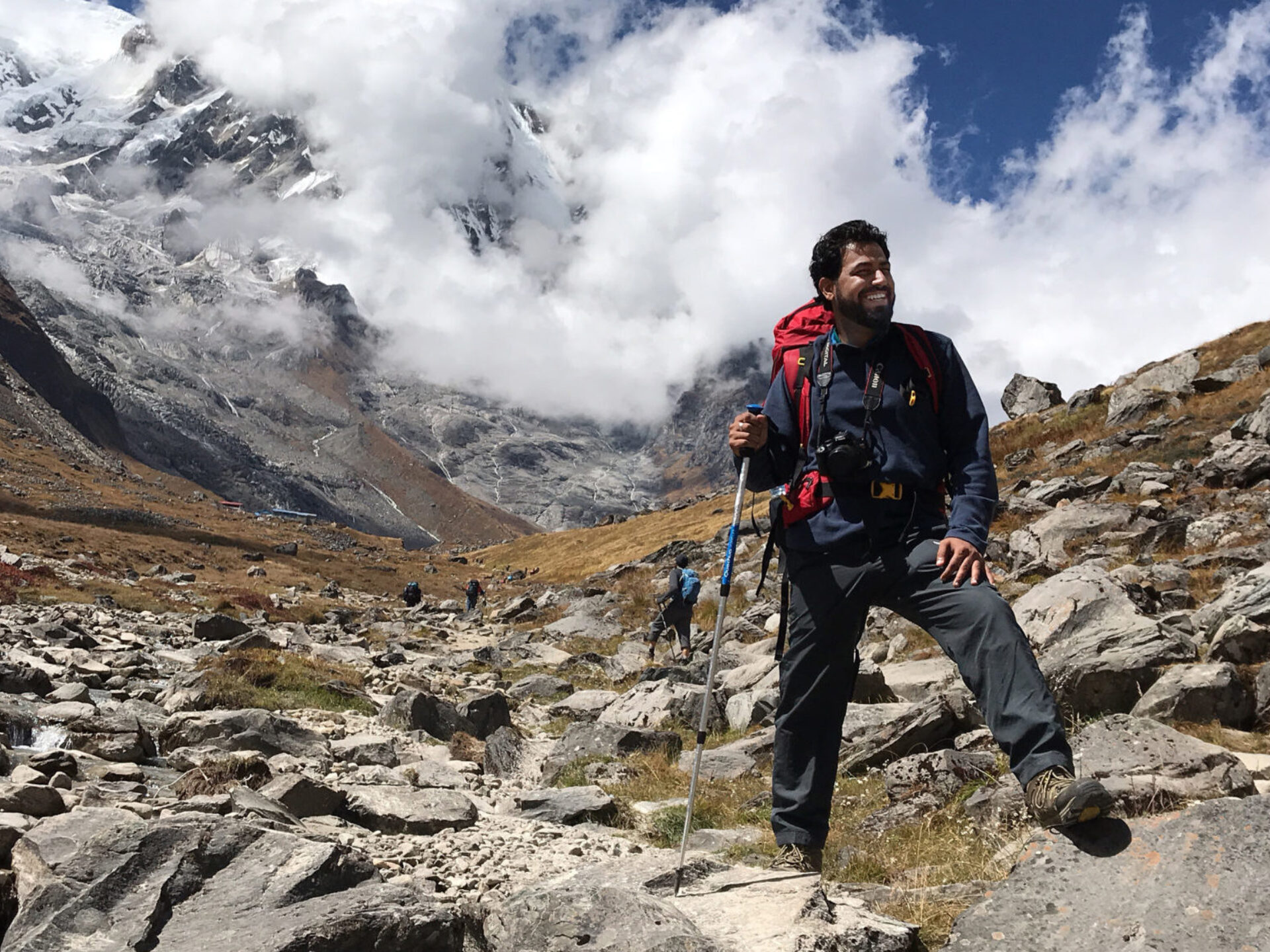Magazine

November 18, 2020

This article was originally published in Populous Magazine, our biannual publication featuring news and trends from the worlds of sport, entertainment, and major public events. Find out more, and sign up to receive a free copy, here.
Siddharth Soni, Associate Principal in Populous’s New Delhi office, lives for his mountain expeditions in the Himalayas. They have taught him resilience and decision-making skills. They give him
a humbling perspective on life.
Siddharth Soni’s love affair with the Himalayas began in his teens. Fresh out of high school and not yet certain of his career path, he was encouraged by his father, a military man, to step out of his comfort zone and explore the world. “He told me, ‘You’re not a kid anymore. Go out and travel. Be on your own’,” Siddharth recalls.
His maiden expedition was to the Valley of Flowers National Park, a UNESCO world heritage site in the Himalayas, far from Siddharth’s New Delhi home. Travelling with only a backpack, he chose a “relatively simple” route, following a snaking trail through the foothills before climbing sharply to 4,500 metres (14,700 feet). At this altitude, the oxygen level is about half that found at sea level.
For the young Siddharth, who had embarked on his adventure without any training, the ascent was punishing. Nevertheless, he was hooked. “Being outdoors and camping, living on your own, being independent… I realised it’s a whole different way of looking at things. It’s not just travel as such. It’s about discovery. I got to know a lot more about myself and found some friends along the way. That’s what made it really special.”
Ever since then, Siddharth has returned to the mountains at every opportunity. He has trekked around several peaks and massifs that rise past 8,000 metres, including Kangchenjunga, Annapurna, Dhaulagiri and Manaslu.
Severe snowfall makes most routes inaccessible between December and April, and it’s during this period he trains and plans his trips. He says it takes at least three months to organise permits, porters and sherpas.
His training focusses on preparing for the reduced oxygen levels at high altitude, and for carrying a rucksack weighing up to 20kgs (45lbs). Starting up to four months before an expedition, his gym regime includes high-repetition bodyweight exercises to increase lung capacity, build strength, and become leaner. He also adjusts his diet: “No junk, no carbs. It’s about eating light.”
Siddharth’s most challenging climb so far has been a peak in the Ladakh Range, in northern India, close to the Chinese border.
For the Himalayas, it wasn’t extremely high – around 6,200 metres (20,200 feet) – but he hadn’t physically prepared as well as he should have. The push to the summit required a 19-hour round trip, leaving base camp at 9pm, reaching the peak in the early morning hours, and returning to base camp the following afternoon.
“I was miserable throughout the entire climb,” he remembers. “I’d walked through the glacier and my shoes were all wet. I was exhausted and cold. I thought I wasn’t going to make it but my climbing partner kept saying: ‘Okay, forget the summit. Let’s just get to that next rock over there, then we’ll sit down, have some water and chocolate, and we’ll see if you can keep going.”
Progressing like this, in fits and starts, they finally reached the summit. “That feeling of eventually making it, despite all odds, is incomparable,” he says.
Siddharth believes that experiences like this have made him a better architect and leader at Populous. Now based at the practice’s New Delhi office, he feels his expeditions have taught him resilience, and how to make assured decisions under pressure. He says they have given him a “perspective on life that a lot of people won’t have.”
“It’s very humbling, because it’s taught me that our existence and our experiences are momentary,” he adds. “Mountains have been here for hundreds of thousands of years, and we are here for what? Seventy, 80, 90 years? So, you learn that there are bigger things in life. You end up discovering something new about your own self.”
This year a trek to Everest base camp had been planned, but that was before the pandemic intervened. Now, though, Siddharth is planning an even more epic challenge: an ascent of one of the Himalayas’ 8,000-metre peaks within the next decade; possibly even Everest itself.
Like many adventurers, he feels the pull of these legendary mountains and the prestige within the mountaineering community that comes from reaching such a height. But for him, the experience remains rooted firmly in the journey. “It’s those smaller experiences such as drinking from a stream, or making friends with someone,” he says. “I’ve watched a snow leopard on one of these expeditions. Or maybe someone gets into trouble and you help them out and they become your best friend. It’s those incidental experiences that you don’t really plan for, but which just happen along the way. Those are the moments you remember.”
Lorem ipsum dolor sit amet consectetur, adipisicing elit. Non facere corporis et expedita sit nam amet aut necessitatibus at dolore enim quis impedit eius libero, harum tempore laboriosam dolor cumque.
Lorem, ipsum dolor sit amet consectetur adipisicing elit. Illo temporibus vero veritatis eveniet, placeat dolorem sunt at provident tenetur omnis, dicta exercitationem. Expedita quod aspernatur molestias eum? Totam, incidunt quos.